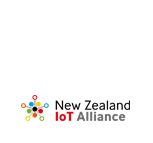IoT Alliance comment:
“In our our first post of 2019, we take a global look at the adoption and impact of IoT. The World Economic Forum has identified six IoT solution that will be the most impactful and scalable including 1) · Early warning and disaster prevention 2) Worker safety, well-being and efficiency 3) Health monitoring and patient treatment 4) Transport of goods and people 5) Crop and livestock management 6) Management of finite natural resources (energy, water). We invite you to read this thought provoking article and ponder will your IoT solution fail or succeed.”
Full article source: www.weforum.org
More than $1.2 trillion will be spent on internet of things (IoT) solutions over the next four years, notwithstanding that three-quarters of IoT projects currently fail. New analysis released today by the World Economic Forum, the International Organization for Public-Private Cooperation, aims to help governments and companies think more strategically about which IoT solutions can generate the greatest impact and return on investment.
The Centre for the Fourth Industrial Revolution and a community of experts analysed more than 200 case studies, and corresponding solution sets, of IoT technologies successfully tested and deployed around the world. IoT solutions in six thematic clusters were identified to be among the most impactful and scalable:
· Early warning and disaster prevention
· Worker safety, well-being and efficiency
· Health monitoring and patient treatment
· Transport of goods and people
· Crop and livestock management
· Management of finite natural resources (energy, water)
“IoT has the potential to unleash new economic opportunity and dramatically improve the quality of life of billions of people – but this future is far from guaranteed. Without a more strategic focus and roadmap, we risk squandering trillions of dollars in public- and private-sector investment in the years ahead,” said Jeff Merritt, Head of IoT and Connected Devices at the World Economic Forum. “By focusing attention on tried-and-tested solutions, we can reduce the risk associated with these new technologies and enable more consistent, positive impact.”
Robots won’t take all jobs
Contrary to growing concerns about the potential of automation to displace labour, the IoT solutions highlighted in the analysis focus on enhancing the productivity of workers, not replacing them. For example, in the healthcare sector, a shortage of doctors has prompted concern from India to the United States. IoT solutions that enhance preventive care and the early detection of health conditions are among the most impactful and scalable solutions to date. In agriculture, where food security remains an ever-present global challenge, IoT technologies can potentially help workers optimize the use of water and fertilizers, or manage livestock.
Asia tops IoT spending, sees as solution to growing concerns
The bulk of highly impactful and scalable IoT solutions address pressing needs in China and the broader Asia region, notably with regard to a growing elderly population and rapid urbanization. According to United Nations data, East Asia is ageing faster than any other region of the world. From 1990 to 2017, the population over age 40 in East Asia grew from 28% to 48%. In parallel, Asia is witnessing an unprecedented move of population from rural to urban communities. In China, for example, the urban population has increased by 500 million people in the past three decades. These trends are placing increasing pressure on healthcare systems and urban infrastructure — areas where IoT has proven incredibly valuable. Not surprisingly given this finding, the Asia region currently leads the world in IoT spending.
Smart cities and manufacturing most visible, but not clear-cut solutions
Despite a proliferation of IoT technologies in smart cities and manufacturing, experts were divided on the potential impact and scalability of these solutions. Smart city solutions that focus on system-wide efficiencies – such as monitoring real-time electricity consumption to optimize power grids – appear to hold the greatest promise in the short term.
In the manufacturing sector, IoT technologies that improve worker well-being stood out above solutions that focus exclusively on enhancing system operations. These worker-centric solutions include using IoT technologies to optimize workplace conditions, including temperature, lighting and air quality, and the use of wearable technologies to monitor the health conditions of workers, thereby reducing the risk of accidents and helping to optimize the performance of employees.
“Having employees who are healthy both physically and mentally and can work energetically is an important competitive advantage for companies,” said Hiroaki Kawamura, head of Digital Development at Suntory. “We applaud the World Economic Forum for this important work and are proud to contribute to this work through our partnership with the Centre for the Fourth Industrial Revolution.”
For more information on the Forum’s initial findings and a list of contributors, visit: https://wef.ch/iot-impact






